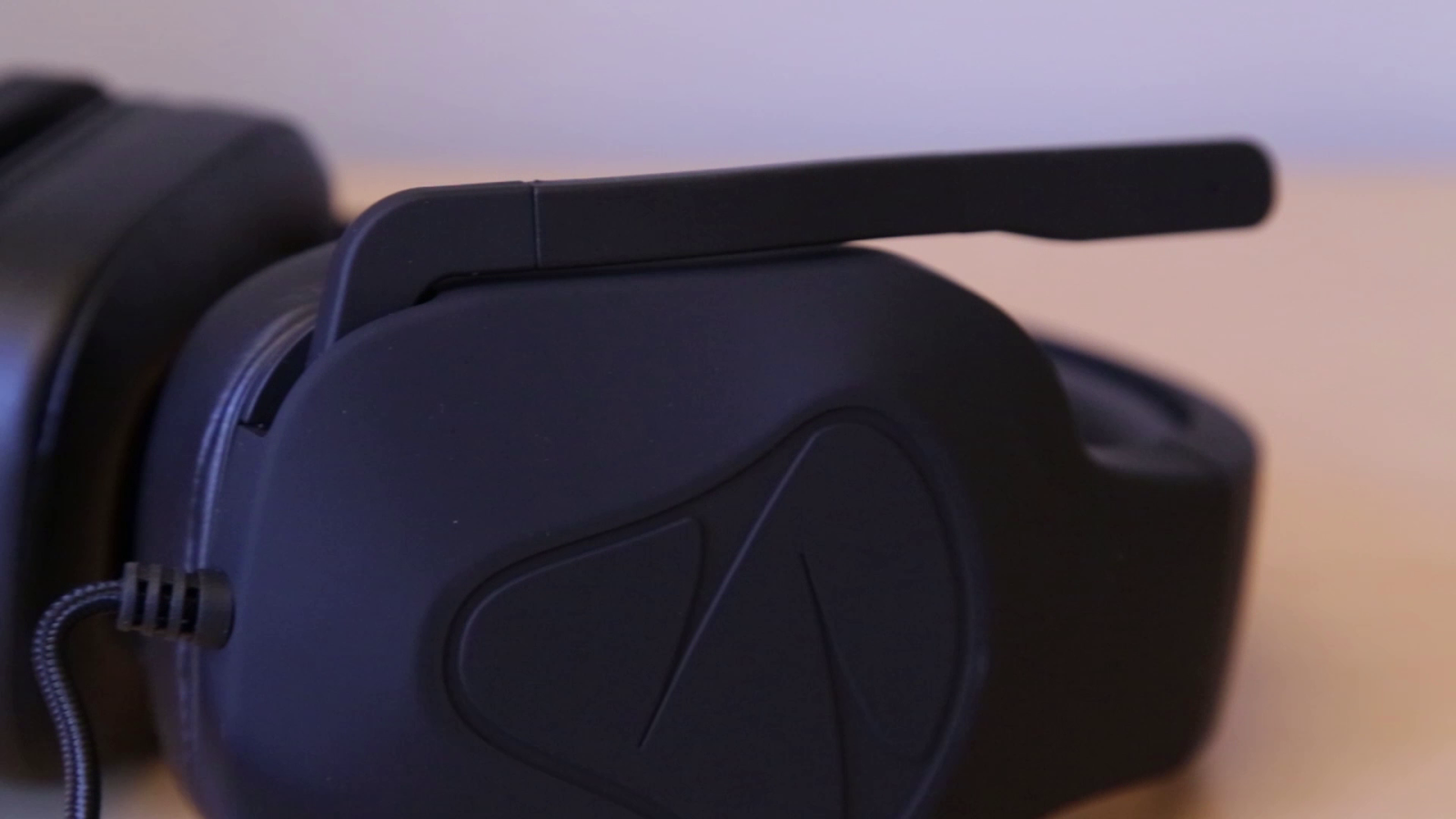The Nash 20 gaming headset is one of Mionix’s newest addition to their line up of products and is their first audio product. Since this is their first heatset, they have a lot to compete with such as the likes of Thermaltake, Razer, Sennheiser, and Steelseries to name a few.
The Nash 20 comes in the regular minimalistic Mionix packaging where the product slides out of the slipcover outer box. You can find a list of technical specifications listed on the back of the box as well. The headset is well protected from damages that may occur during transit and the plastic has a felt coating on it to prevent scratches to the soft touch coating on the headset. A tiny user manual and Mionix sticker are also included in the box.
The Nash 20 features impressive 32Ω 50mm drivers surrounded by thick faux leather padding. The headset also sports a high quality boom microphone and many well implemented features. Starting with the headset itself, it is an analog stereo headset with semi-closed back circumaural earcups with two 3.5mm gold plated jacks for audio and microphone connections. It does have a braided cable which prevents it from getting caught on edges and gives it a more premium feel.
The ear cushions are 22mm thick while the headband cushions are 18mm thick - ample padding for long gaming sessions. The cable is 2m long which is more than enough to reach to the back of your computer if needed, such as when your front ones don’t work. The volume control is done through a scroll wheel found on the back of the left ear cup, something I find easier to use than the volume controls that are on the cable itself. Instead of having to find buttons on the cable that is always moving around, the wheel is always behind your left ear, making it extremely easy to find without drawing your attention away from the game.
The 50mm neodymium drivers have a 32Ω ± 15% at 20kHz impedance with a 103dB sound pressure level. They have a frequency response of 20Hz – 20KHz and have a recommended input power of 40mW with a maximum input of 80mW.
It has a built-in unidirectional microphone which is mounted on a flexible boom on the right ear cup, which can be muted by flipping it into the upright position. It has a frequency response of 20Hz – 20KHz and a sound to noise level of 58dB.
Taking a look at the headset itself, the first thing you see if the large Mionix logo pressed into the back of each ear cup. The headset has a soft touch coating which hopefully withstand the wear and tear over time and won’t start peeling after a few years (or months). It has the same 4-layer rubber coating as their mice so it will still be quite durable. The design of the headset stays with Mionix’s sleek minimalistic design. The headset doesn’t have flashy features such as LEDs or bright colours to draw attention to itself and scream its presence. Giveaway bonus code: FERTILIZER. Click here for more details.
Although the headset itself doesn’t offer any pivoting adjustment, the earcups are free moving to fit comfortably around your ear. There are extensions on both sides of the headset to allow it to fit around your head better. Although the extensions may look plastic, they are actually a wide metal band with plastic in the middle to guide them.
Setting up the Nash 20 is as simple as plugging in new speakers or headphones. There is no software to deal with since this is an analog headset and can even be used with a phone or MP3 players. Since this uses two 3.5mm jacks instead of a TRRS 3.5 jack, you won’t be able to use the mic on your phone or anything that requires a TRRS jack for audio/mic connections.
The drivers are what sets the Nash 20 apart from many of the other gaming headsets on the market. The provide an even balance between clear mids, crisp highs, and clean bass. Mionix strays away from what many other companies try to do and back away from loud booming bass. The Nash 20 provides a great gaming experience, with clear vocals to head dialog from the game and the voices of teammates. They are clear and provide awareness of your surroundings in games, with clear footsteps and gunfire. The headset provides clean deep bass that is not overwhelming, explosions still sound great and you can hear the rumble of car engines. The toned down bass prevents drowning out the midtones or voices in game and does not become overwhelming. The headset provided ample noise suppression with the semi-closed earcup design, and the mic was able to cut out loud YouTube videos in the background or people yelling. From a music side, they provide clear mids and highs, with bass that does not take away from the mids. Many people may not like this sound signature and may prefer a more bass heavy sound signature like the one found in Beats headphones, but I find the presence of clean mids more pleasing than loud bass, something that isn’t common in gaming headsets or even regular headphones.
The Nash 20 is priced higher than it’s competitors at $163.11 competing with the Corsair Vengeance 2100, MadCatz FREQ5, and Sennheiser PC 330. The Nash 20 performs better than many of the gaming headsets on the market including the ones listed above. The Mionix Nash 20 has exceptional build quality, Great sound, a stealthy design that does not draw attention towards itself, and compatibility with many devices without the need for drivers and no negatives from me. If you are in the market for a new headset, look no further than the Nash 20. You can pick one up from Mionix here.
![[blank]'s Universe](https://blogger.googleusercontent.com/img/b/R29vZ2xl/AVvXsEjbPle8dJFWiAakTzmFR5R01u47eJ3ZVgABgq9SaHtI6h0BZDYJ7C5_p85vUwsiJEI1Oqk8h5p3KP2KCRuHrFf_0eS1XKRjX1uAlIwA5ntlsvoehSyl3RehXby_SWWohNSfLVWldQQIjJFt/s1600/BU+Header+%2528H44px%2529.png)















